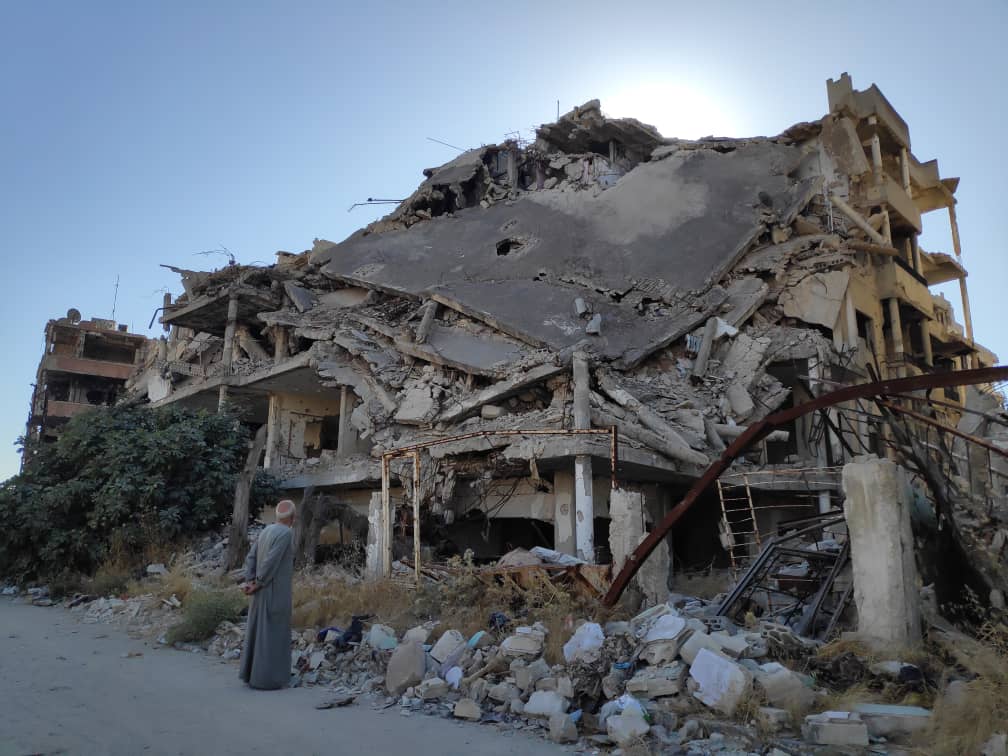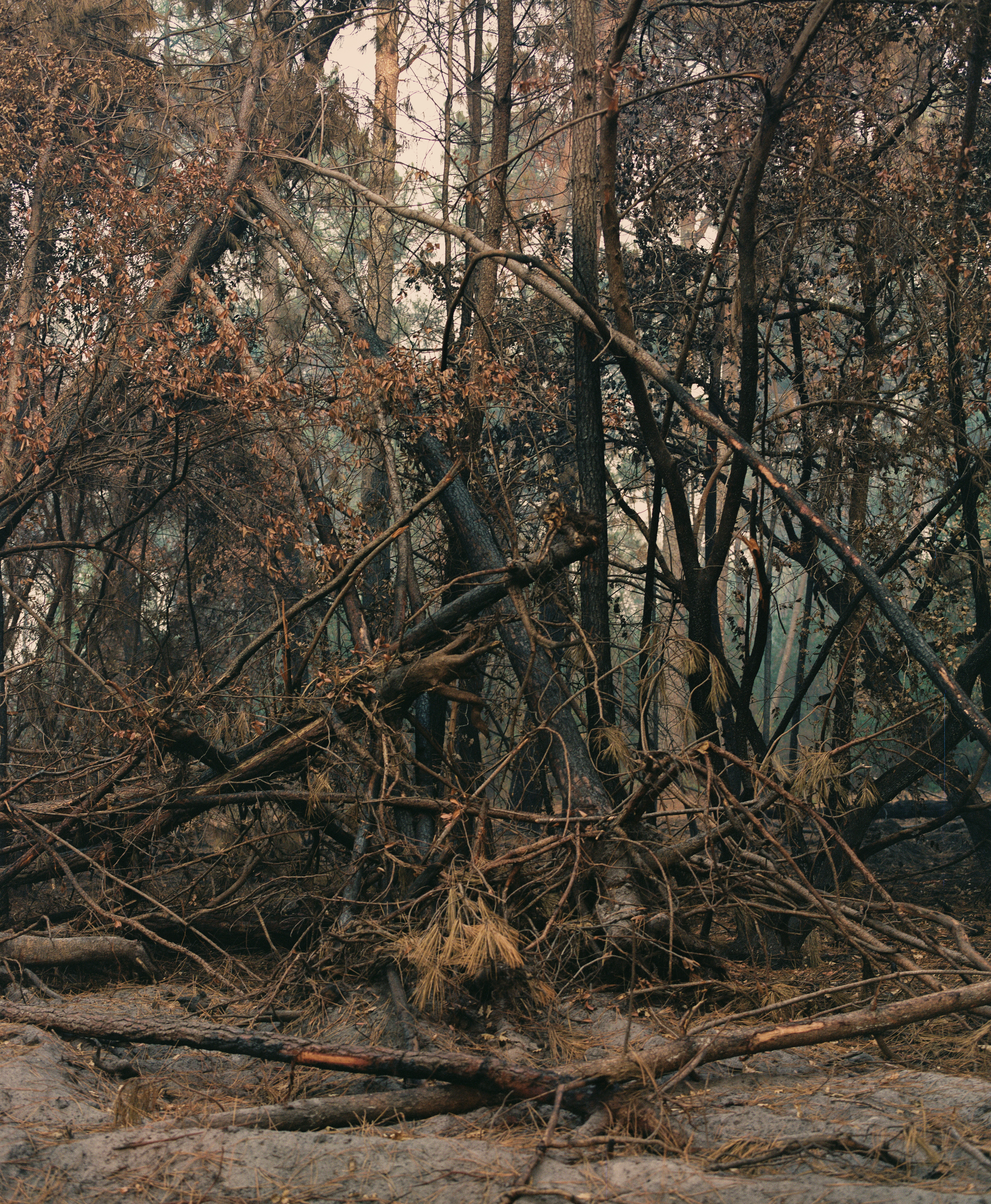Interview by Cristina Cusenza from HW team to Ammar Azzouz, architect and analyst at ARUP
HW: Introduce us to your new project “Domicide”. How did you come up with this idea?
What inspired you, and what do you aim to communicate?
AA: Domicide, the destruction of home, is a collaborative video project that explores the destruction of cities and towns at times of violence and conflict across different regions and moments in history. While we are often told about the loss of architecture and cultural heritage sites, Domicide also gives importance to the loss of seemingly ordinary monuments that used to make up the inhabitants’ day-to-day life. It features interviews with academics working on cities that were rebuilt after going through war, including Sarajevo, Guernica, Warsaw and Homs.
Domicide includes a series of interviews with University of Cambridge’s Dr Dacia Viejo Rose and Dr Joanna Kusiak, LSE’s Dr Deen Shariff Sharp, and the University of Manchester’s Dr Martin Coward, and two UK-based Syrians whose lives have been impacted by the war. In this project, I was interested in the notion of home, and the loss of people’s sense of belonging with the desolation of their cities and towns. As Dr Dacia Viejo Rose says: “One of the tragedies of the destruction of war is that it destroys not only heritage, history and culture, but it destroys people’s homes. Their homes not only in terms of the building itself, but their home in the sense of where they feel they belong.” The idea of the project emerged whilst undertaking my research on cities, trauma and political violence. Looking at cities in Syria as Raqqa, Aleppo and Homs, it seems almost impossible to imagine that these ruined and battered cities will be rebuilt, but history shows us that the city emerges back from its ruins and that a radical hope is needed now to imagine this. This is why I started interviewing academics who work on different contested geographies to look at the loss these cities endured and learn from their reconstructions. I hope this project would influence future projects that look at comparative urban studies with a focus on destruction, rebuilding and reconstruction.
HW: Who introduced you to the world of cultural heritage and post-conflict
reconstruction? Tell us about how you got started.
AA: I come from Homs, a city that has radically been reshaped by urban destruction, political violence and mass displacement. Since 2011, Homs, as other cities in Syria, has lost much of its urban, social and cultural fabrics with the destruction of its everyday architecture and cultural heritage sites. As an architect, I was very keen to learn more about my own city, and the loss the city and its people have endured, but I was also keen to look at different divided and ruined cities as Beirut, Nicosia, Belfast and Berlin. I have started exploring themes related to cultural heritage and how it is used and abused in conflicts, and have had the chance to meet with several scholars, activists, professionals and policy-makers who have similar interests, which has been very important to learn from them and exchange ideas.
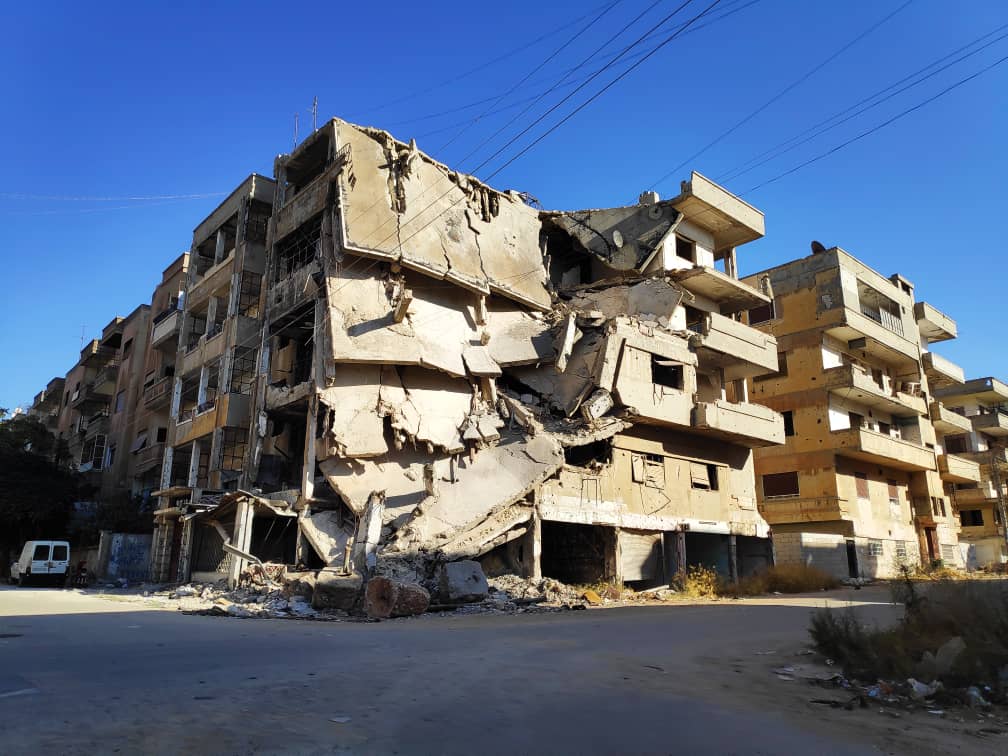
Destruction in Homs 2019 – Source Hussam Wali
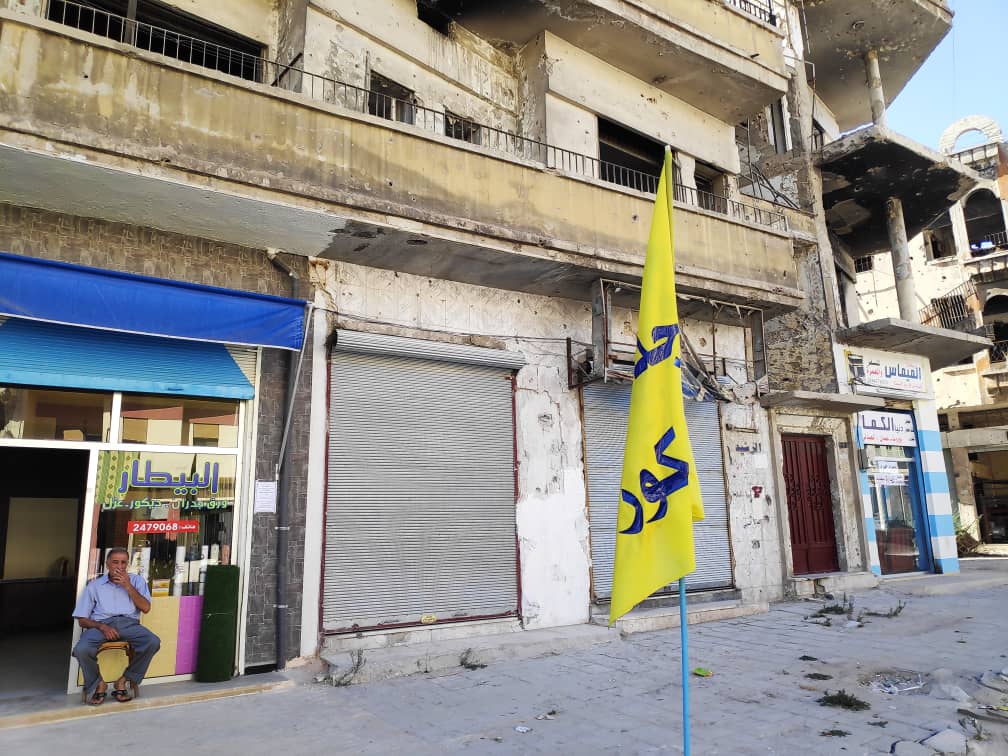
Destruction in Homs 2019 – Source Hussam Wali
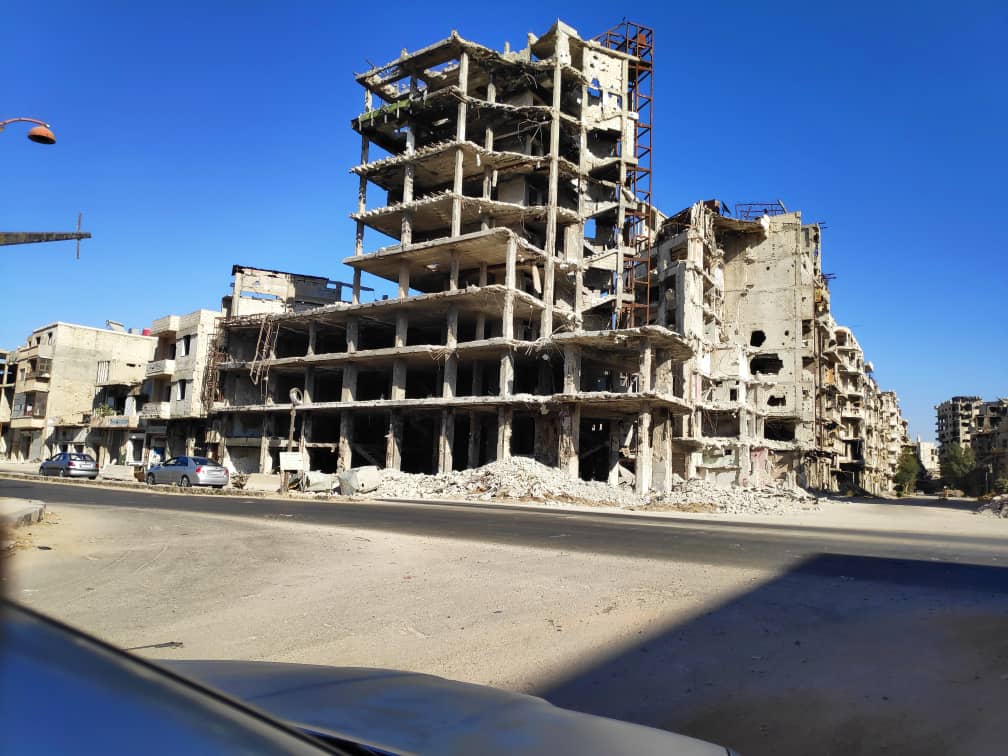
Destruction in Homs 2019 – Source Hussam Wali
HW: Which artists/photographers/authors are you a fan of?
AA: There has been an emerging cultural wave to tell an alternative story about Syria during the
years of war. I am moved by the work of several people including the writings of Prof Nasser
Rabbat, Mona Rafea, Wael al-Hamid, the photographs and videos of Sundos
Zinkawan, the drawings of Deanna Petherbridge, the sculptures of Issam Kourbaj and many
many other well-established and emerging people who are fighting to tell the story of Syria
and constructing its narrative.
HW: What are you obsessed with right now?
AA: Obsessed with finishing the books that I started but never completed. So now doing them
one by one during the lockdown.
HW: Where do you get inspiration from in your work as well as in your artworks?
AA: I always get inspirations from the people I interview and speak with; mainly the residents
who remain inside Homs who have endured so much loss, pain, and trauma but often
determined to imagine a better future, to keep pushing to keep learning. I also find
inspirations from the readings I do, and from the great scholarly community I am engaged
with.
For my artwork, my inspirations often come from the personal situation I am living – so my
art is a reflection of my life. I find it inspiring, however, to read poetry as the work of
Elizabeth Bishop.
HW: What’s the dream?
AA: I dream of returning to Syria, to live in my city, Homs.
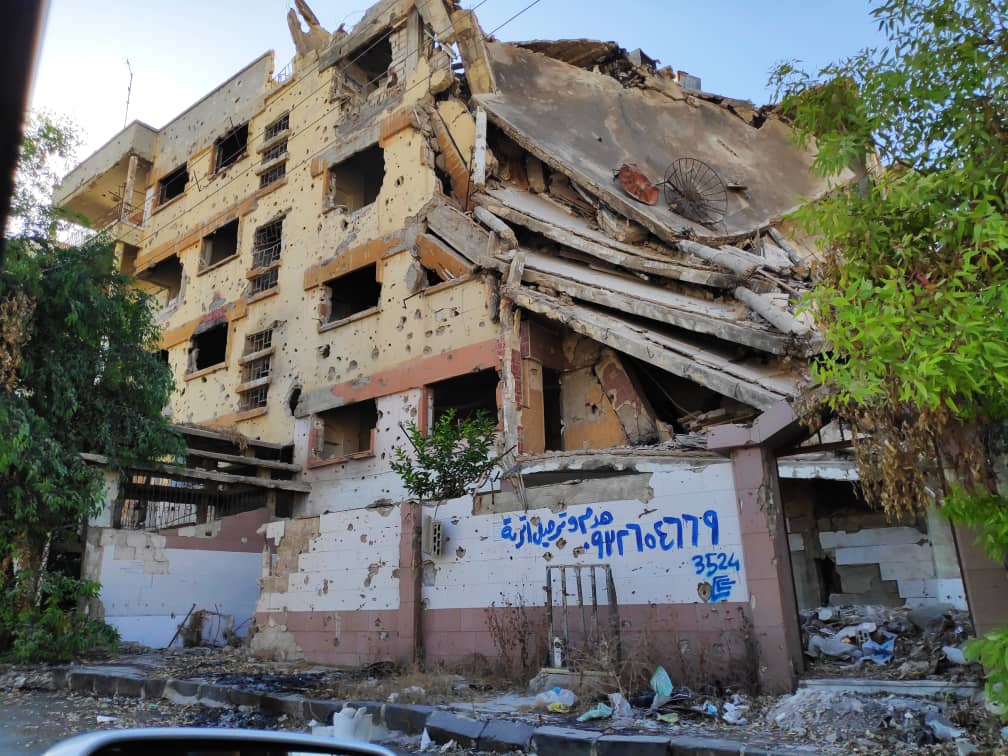
Destruction in Homs 2019 – Source Hussam Wali
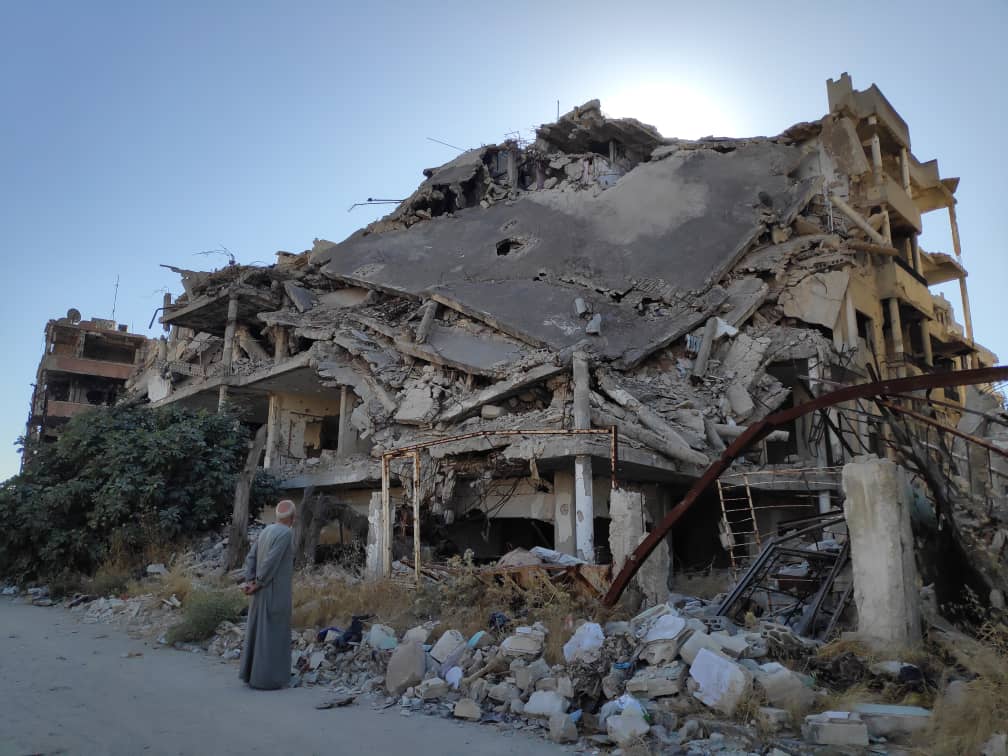
Destruction in Homs 2019 – Source Hussam Wali
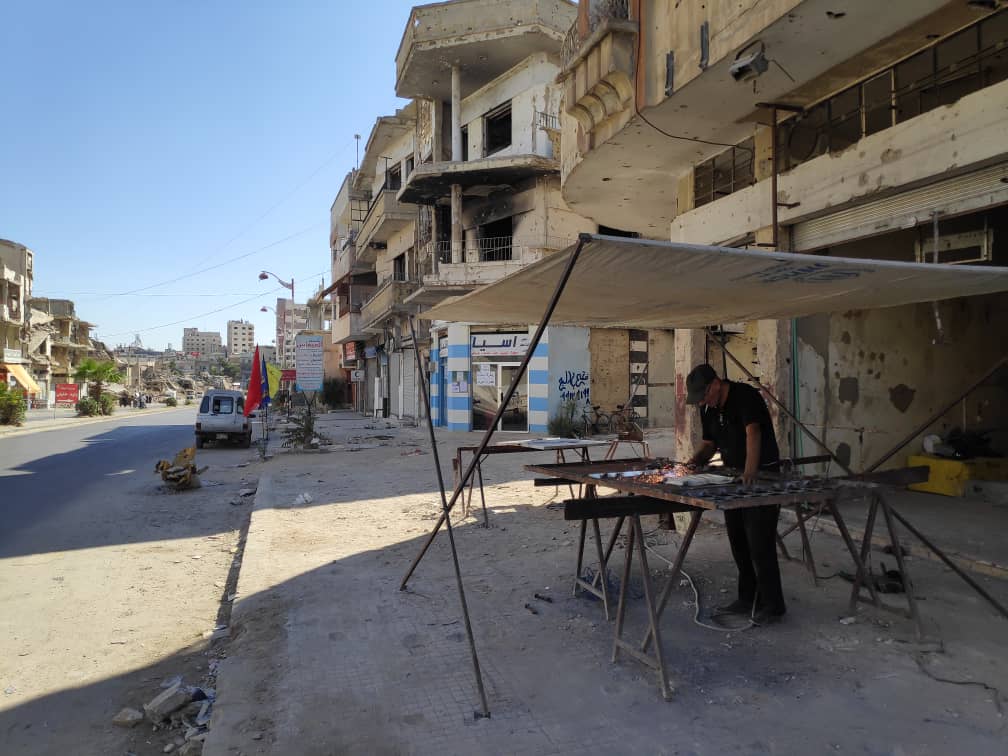
Destruction in Homs 2019 – Source Hussam Wali
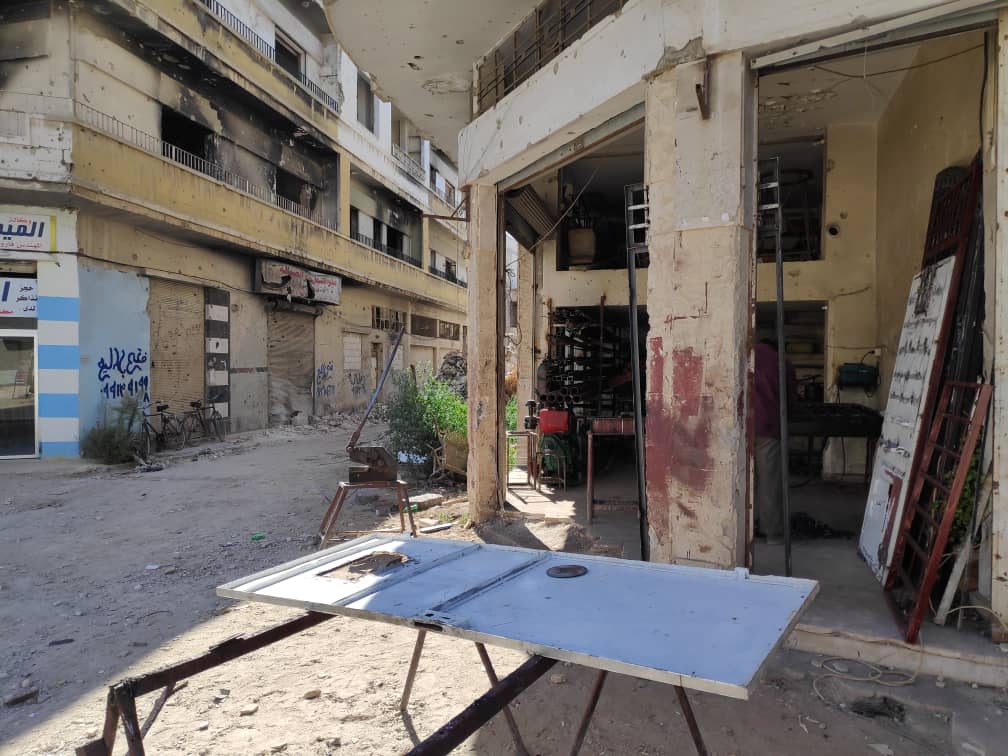
Destruction in Homs 2019 – Source Hussam Wali
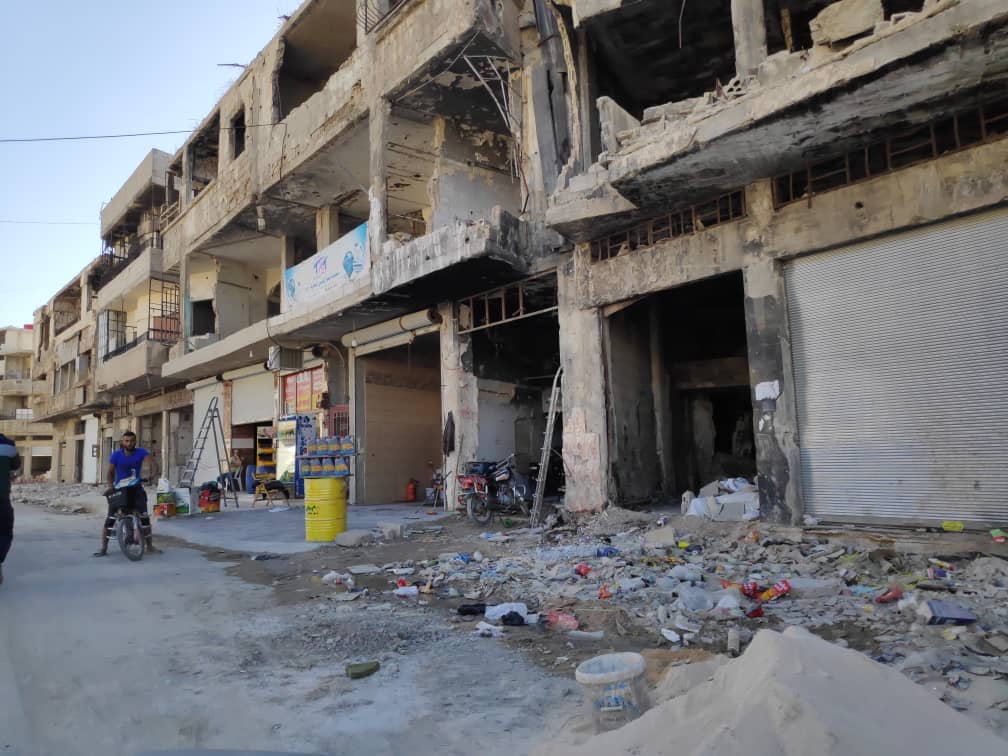
Destruction in Homs 2019 – Source Hussam Wali
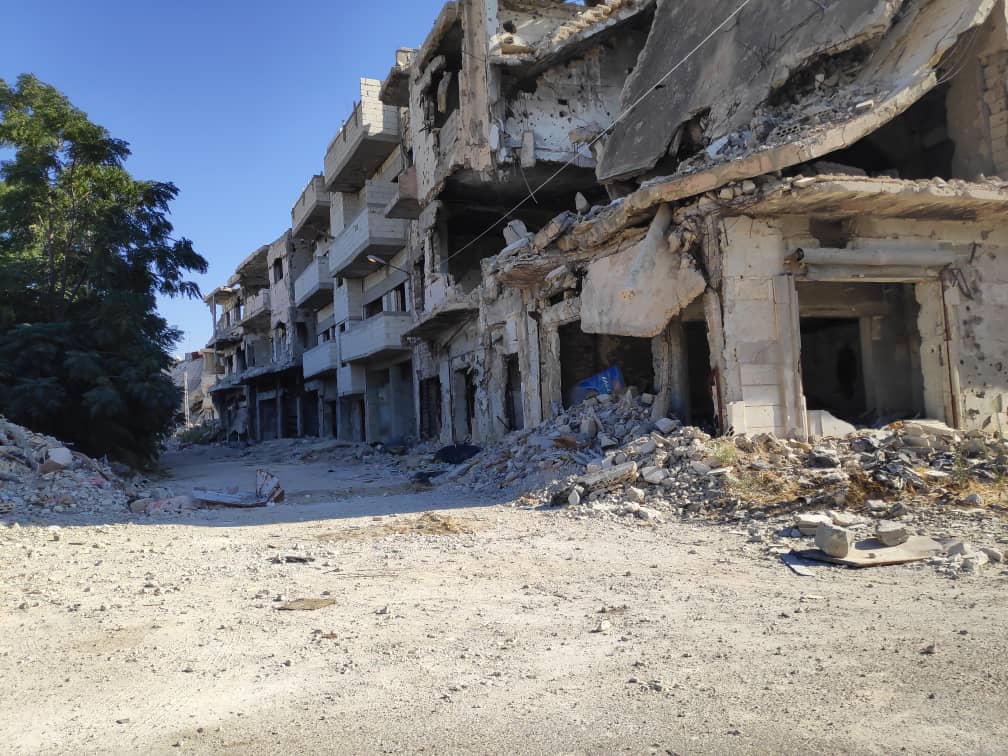
Destruction in Homs 2019 – Source Hussam Wali
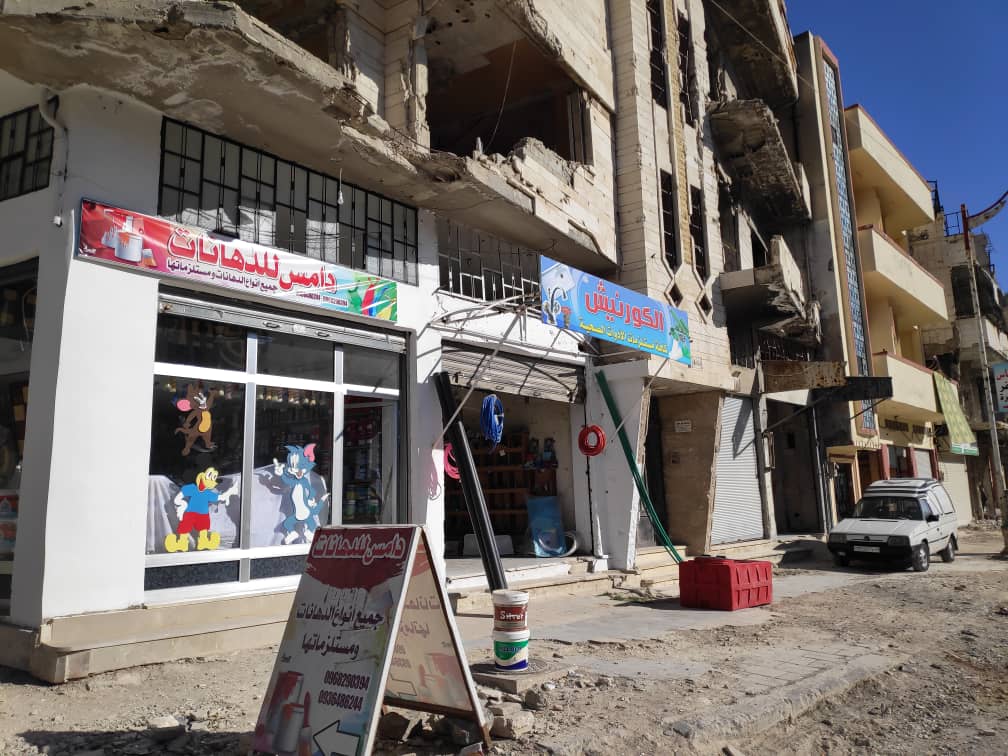
Destruction in Homs 2019 – Source Hussam Wali
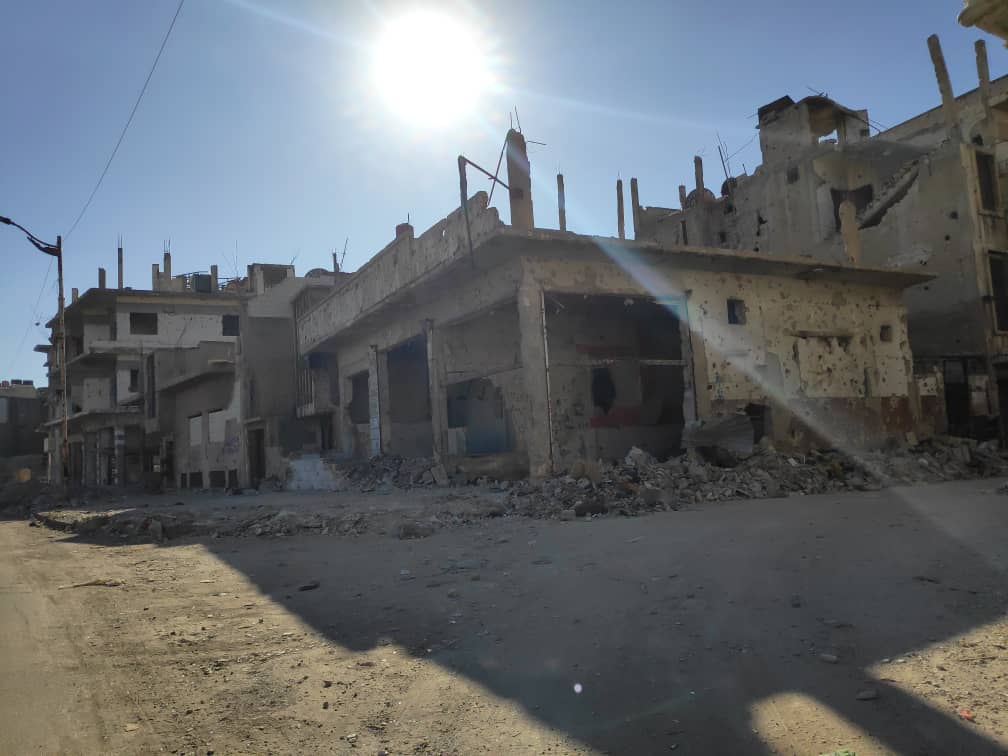
Destruction in Homs 2019 – Source Hussam Wali
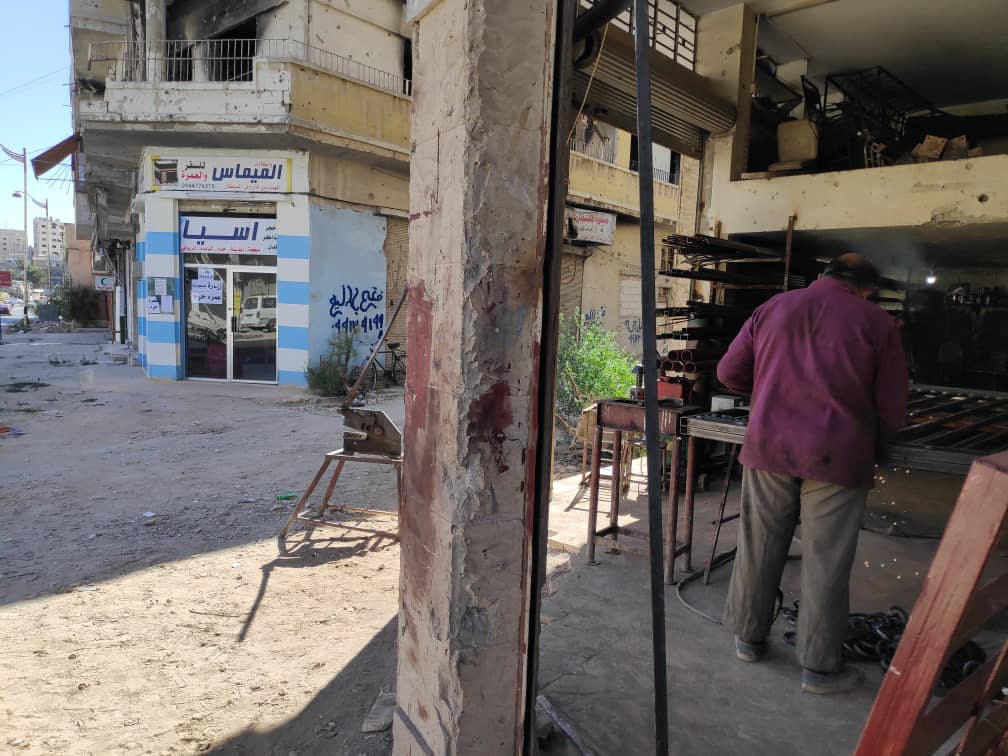
Destruction in Homs 2019 – Source Hussam Wali
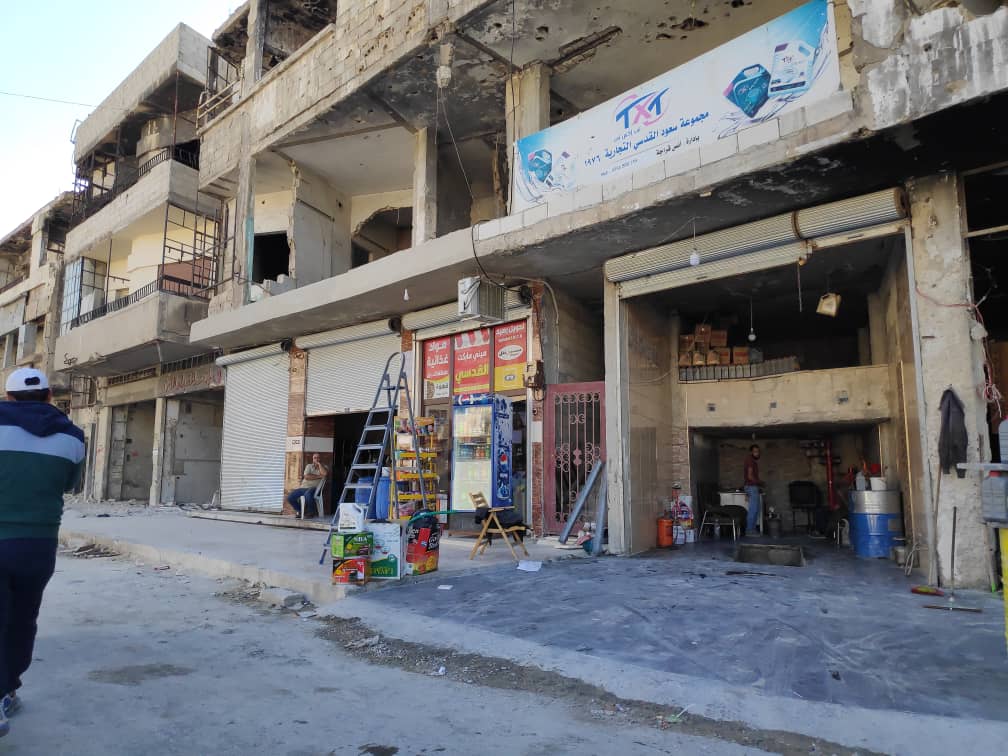
Destruction in Homs 2019 – Source Hussam Wali

